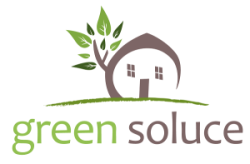Season 2.0 - Special Green Finance and Real Estate
Since the Paris Agreement was adopted at COP21, the financial community has come together and taken major steps towards tackling climate change, such as during the One Planet Summit in December 2017. Among the financial tools available to boost the transition towards a low carbon economy, green bonds are expected to help accelerate this shift, especially in the field of sustainable buildings and cities. The building industry being one of the highest carbon emitters (23% of the global emissions in France, according to ADEME), this is great news and promises huge potential.
What is a green bond?
Green bonds are not different from regular bonds in the way they work. Both types of investment securities offer a predictable return to investors in the form of a fixed coupon, in exchange for medium to long-term funding for economic activities. The difference between the two lies in the eligibility of the funds. The idea is simple: a green bond finances only projects that bring environmental gains, such as projects related to renewable energy, energy efficiency, sustainable waste management, sustainable land use (forestry and agriculture) and biodiversity. Green bonds allow organisations on the one hand, to have access to capital at a massive scale, and on the other hand, for investors to diversify their portfolios, as well as demonstrate their commitment to fighting climate change.
The volume of labeled green bonds has grown meaningfully reaching US$160 billion of outstanding issuances in 2017, against US$15 billion in 2013. Among them, US$60 were issued in Europe (Standard and Poor’s) and Europe still remains the leader in green bond issuances in 2017. Considering less strict criteria (unlabeled green bonds), this amount reaches about US$ 895 billion. For the moment, the market is dominated by two sectors: renewable energy projects (about 40%) and buildings (20%), according to the Climate Bonds Initiative. Potential demand from investors is extremely high! Investors with over US$60 trillion of assets under management have made public commitments to make responsible investments, and green bonds can help them to achieve their pledges.
How do you measure that projects are green?
The characterisation of green bonds is still a bit confusing. However, issuances are strictly observed, commented on via Second Party Opinions and reported on via Impact reporting carried out by expert firms such as Green Soluce to determine if the projects are “green” enough, in order to avoid any risk of greenwashing.
Nowadays two sets of standards have been defined to meet this specific need. The most widely accepted guidelines for green bonds are the Green Bond Principles (GBP). These are voluntary guidelines elaborated by key market participants under the coordination of the International Capital Market Association (ICMA).
They are complemented by the work of the Climate Bonds Initiative (CBI), as well as by the work of multilateral financial and governmental institutions such as the European Commission with the High Level Expert Group on Sustainable Finance (HLEG). A number of private and industry-driven organisations such as GRESB (Global Real Estate Sustainability Benchmark) are pushing the methodology further to determine the eligibility of sector-specific sustainability projects such as real estate projects, and how to take into account a broader perspective on sustainability with regards to ESG criteria. The goal would then be to issue not only green bonds, but sustainable bonds.
What opportunities for green projects?
US$6-7 trillion. This is the annual investment, which will be needed over the next 15 years to meet the demand for green investment. For example, the International Energy Agency estimated that investment in energy efficiency would need to be multiplied by eight to respect the 2°C scenario in 2100. The bond market, which provides about 1/3 of total financing for the corporate sector, has to play a comparable role in green financing. The OECD estimated that labeled green bonds issued globally represented less than 1% of total US bond issuance in 2016: the potential for green bonds is considerable.
And the list of benefits for all the actors is important. Green bonds can enable more long-term green financing by addressing potential maturity constraints for alternative products. On the other hand, green bonds can help investors clarify the corporate environmental strategy of companies in traditionally brown sectors by facilitating the shift to greener activities.
Green bonds were traditionally demanded by environmentally and socially responsible investors but now, market opportunities extend beyond this category of investors. The Climate Bonds Initiative estimates that the labelled green bond market could reach US$300 billion of issuance by 2018, dominated by the United States, France and China.
The future of green bonds seems to be assured. According to some studies conducted by major investment banks such as Bank of America, Merrill Lynch, Morgan Stanley, Barclays and UBS, around 89% of all investors expressed interest in sustainable investments and are already familiar with sustainable investing products, including green bonds. Low-carbon technologies in buildings and energy will remain the main beneficiaries of green investments and green bonds. In France, according to CBI, real estate is now the leading sector in green bonds issuances (32% in 2017), after a long dominance of renewable energy projects (18% in 2017). This trend seems to be strongly supported by the growth of certified buildings, which is a relevant guide for green building bonds market.
This may mean that the next generation of investors will deploy their capital in green bonds and that green buildings have a bright future backed by green bonds and environmental certification. After all: who would not be happy to finance environmental projects and in the meantime achieve financial return?
In our next episode, we will address green loans! Stay tunes on Chroniques Urbaines™ / Urban Chronicles™ by Green Soluce.
For more information on Green Soluce and our services regarding green finance & real estate, please do not hesitate to contact us.




![[Urban Chronicles 2.0 #01] Green building bonds](https://www.construction21.org/data/sources/users/28047/episode1.jpg)
